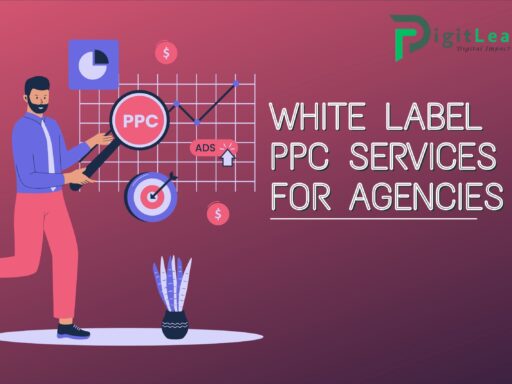2024 Marketing Trends: Are You Missing Any?
Marketing in 2024 is set to be an exciting and ever-evolving landscape. With new technologies emerging, customer behavior shifting, and digital channels expanding, staying ahead of the curve is more crucial than ever. But the question is, are you keeping up with the trends? In this article, we’ll explore the most important marketing trends of 2024 and help you identify if you’re missing any in your strategy.
Personalization at Scale
Personalization has been a marketing buzzword for years, but in 2024, it’s all about doing it at scale. Consumers expect personalized experiences across every touchpoint, from email campaigns to website content. However, the challenge for brands now is delivering those experiences to large audiences without losing the personal touch.
With advancements in AI and machine learning, it’s becoming easier to automate and scale personalization. Tools like predictive analytics help marketers create tailored content based on a user’s previous behavior, preferences, and even purchasing patterns. If you’re not using AI to drive personalization in your campaigns, you might be falling behind.
The Rise of Zero-Party Data
Privacy regulations like GDPR and the increasing use of ad blockers have made it harder for companies to rely on third-party data. Enter zero-party data, which is information a customer willingly shares with a brand. In 2024, more companies are shifting towards gathering zero-party data through interactive content like quizzes, surveys, and loyalty programs.
This trend allows marketers to collect insights directly from their audience, making their data more accurate and less invasive. If your current marketing strategy is still heavily dependent on third-party data, it’s time to pivot towards gathering zero-party data to improve trust and relevance.
Video Marketing Continues to Dominate
Video content is still one of the most effective ways to engage audiences. Whether it’s short-form content on TikTok or long-form tutorials on YouTube, video marketing is showing no signs of slowing down. In 2024, expect to see more brands leveraging interactive video content, shoppable videos, and live streaming to build stronger connections with their audience.
Interactive videos, where viewers can click to make choices or interact with the content, are particularly gaining momentum. This format can help boost engagement and offer a unique, immersive experience. If you’re not investing in video marketing, especially interactive formats, you could be missing out on a huge opportunity.
Voice Search Optimization
With the rise of smart speakers and voice assistants like Alexa and Google Assistant, voice search is becoming an increasingly important aspect of SEO. By 2024, more consumers will be using voice search to find products, services, and answers to their questions.
Marketers need to optimize their content for voice search by focusing on conversational keywords and question-based queries. This means creating content that answers questions directly, using natural language, and making sure it’s optimized for mobile, as voice searches often happen on mobile devices.
Sustainable and Purpose-Driven Marketing
Consumers in 2024 are more socially and environmentally conscious than ever before. Brands that take a strong stance on sustainability, social justice, and ethical practices are seeing a rise in customer loyalty. People want to support companies that align with their values, and purpose-driven marketing helps build that connection.
Whether it’s reducing your carbon footprint or supporting local communities, make sure your brand’s purpose is authentic and not just a marketing ploy. If your company isn’t showcasing its commitment to sustainability or social responsibility, you could be missing a key opportunity to engage modern consumers.
AI-Powered Content Creation
AI tools are rapidly changing the way marketers create content. From generating blog posts to crafting social media captions, AI can now assist with content creation, making it faster and more efficient. In 2024, we will see more brands adopting AI-driven content tools to keep up with the demand for fresh, relevant content.
While AI can’t replace the creativity of a human writer, it can certainly handle repetitive tasks like drafting product descriptions, summarizing articles, or generating content ideas. If you’re not leveraging AI in your content production process, you may be missing out on faster workflows and increased output.
Social Commerce and In-App Shopping
Social media is no longer just for sharing updates or connecting with friends. In 2024, it’s a shopping destination. Social commerce—where users can purchase products directly within social media platforms—is booming. Platforms like Instagram, TikTok, and Pinterest are enhancing their shopping features, allowing users to buy products without ever leaving the app.
If your business sells products online, it’s essential to integrate social commerce into your marketing strategy. Not only does it shorten the buyer’s journey, but it also reaches consumers where they spend most of their time—on social media. Failing to embrace social commerce could mean missing out on a fast-growing revenue channel.
Emphasis on Customer Experience (CX)
Customer experience has always been a crucial part of business, but in 2024, it’s taking center stage. Customers expect seamless, enjoyable experiences across all touchpoints—whether they’re shopping online, browsing your website, or interacting with your customer service team.
This means brands need to invest in user experience design, omnichannel strategies, and proactive customer support. Make sure every interaction a customer has with your brand is frictionless and positive. If you’re not prioritizing customer experience, you risk losing customers to competitors who offer a smoother journey.
Influencer Partnerships Evolve
Influencer marketing continues to be a powerful tool, but in 2024, it’s evolving. Brands are now looking for long-term partnerships with influencers rather than one-off collaborations. Micro-influencers, with smaller but highly engaged audiences, are also becoming more valuable as they offer better trust and authenticity compared to big-name celebrities.
If your influencer strategy is limited to large, high-profile names, it might be time to reconsider. Building deeper relationships with micro-influencers or those with niche followings can lead to more authentic and lasting brand advocacy.
The Shift to First-Party Data
As privacy concerns grow and third-party cookies phase out, first-party data is becoming a top priority for marketers. First-party data is information you collect directly from your customers—through website analytics, email subscriptions, or customer interactions.
In 2024, leveraging first-party data will be critical to understanding your audience and personalizing their experience. Brands that successfully gather and use this data will have a competitive edge in creating targeted, effective campaigns. If you haven’t started building a robust first-party data strategy, now is the time to do so.
Omnichannel Marketing Strategies
The days of relying on a single platform or channel are long gone. In 2024, successful marketing strategies are omnichannel, meaning they reach customers across multiple platforms—whether it’s email, social media, your website, or even in-store.
An omnichannel approach ensures a consistent brand experience no matter where the customer interacts with you. It’s important to integrate all channels seamlessly, making sure each one complements the other. If you’re sticking to just one or two channels, you could be missing out on potential customers who prefer other touchpoints.
Conclusion
Marketing in 2024 is all about embracing new technologies, focusing on the customer experience, and staying flexible with your strategies. Whether it’s personalization, video content, or sustainable marketing, there are plenty of trends shaping the landscape. The key is not to adopt every trend but to choose the ones that best align with your brand and audience.
If you’re not already exploring these trends, now is the time to start. Missing out on these could mean falling behind your competitors, so take the time to review your current marketing plan and see where improvements can be made.
FAQs
Q1. What is zero-party data?
Zero-party data is information that customers voluntarily share with a brand, often through surveys, quizzes, or loyalty programs.
Q2. How can I optimize for voice search?
To optimize for voice search, focus on natural language and question-based keywords, and ensure your content is mobile-friendly.
Q3. Why is personalization important in 2024?
Personalization helps create a tailored experience for users, improving engagement and conversion rates, especially as AI tools make it scalable.
Q4. What is social commerce?
Social commerce is the process of selling products directly through social media platforms, making it easier for users to purchase without leaving the app.
Q5. How can I use AI in content marketing?
AI can assist with tasks like drafting content, summarizing articles, or generating ideas, speeding up workflows and boosting content output.




